Decoding Aviation Meteorology: Understanding Ice Accretion
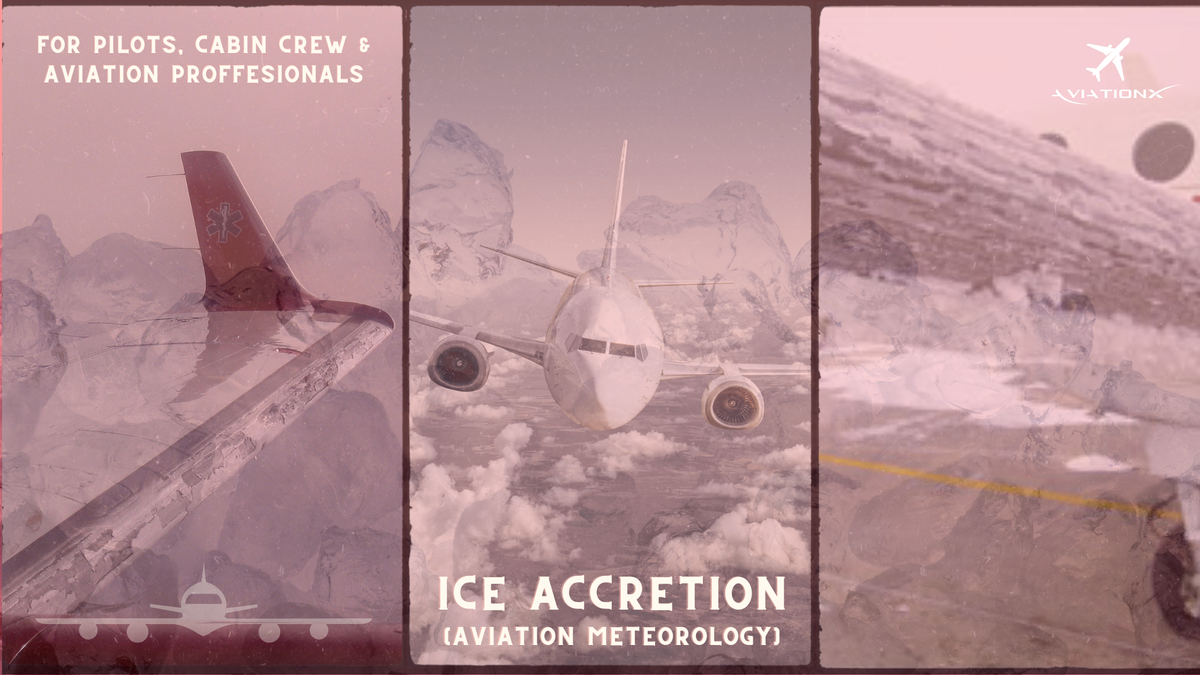
In this blog post on the Aviation Meteorology Series, we will be discussing in detail about Concept of Ice Accretion in detail. This is a must-read for all practising and aspiring pilots, cabin crew and all aviation professionals. and a very interesting read for all aviation professionals. We recommend reading the entire blog for comprehensive learning.
Experienced aviation professionals can attempt a short quiz directly on Understanding Ice Accretion to check their knowledge. Click the button below or the icon on the right-side tab to start the quiz.
Understanding the formation and effects of ice accretion, commonly known as icing, holds paramount importance for pilots, cabin crew, and aviation professionals, especially those preparing for pilot exams.
Icing profoundly impacts an aircraft's aerodynamics, potentially leading to loss of control, making it a critical aviation hazard. Despite the installation of de-icing devices on aircraft, they offer only partial protection.
Therefore, comprehensive knowledge of various types of icing, their formation conditions, and avoidance techniques is indispensable for ensuring flight safety.
Furthermore, understanding the effects of airframe icing, such as altered aerodynamics, increased stalling speed, and potential communication disruptions due to aerial icing, underscores the importance of rigorous training and awareness among aviation professionals.
Additionally, insights into engine icing, including impact icing and carburetor icing, are vital for maintaining engine performance and mitigating power loss.
Thus, this blog serves as an invaluable resource, offering comprehensive insights into the multifaceted challenges posed by icing in aviation, equipping professionals with the expertise needed to navigate the skies safely and confidently.
How Icing Affects Airplanes
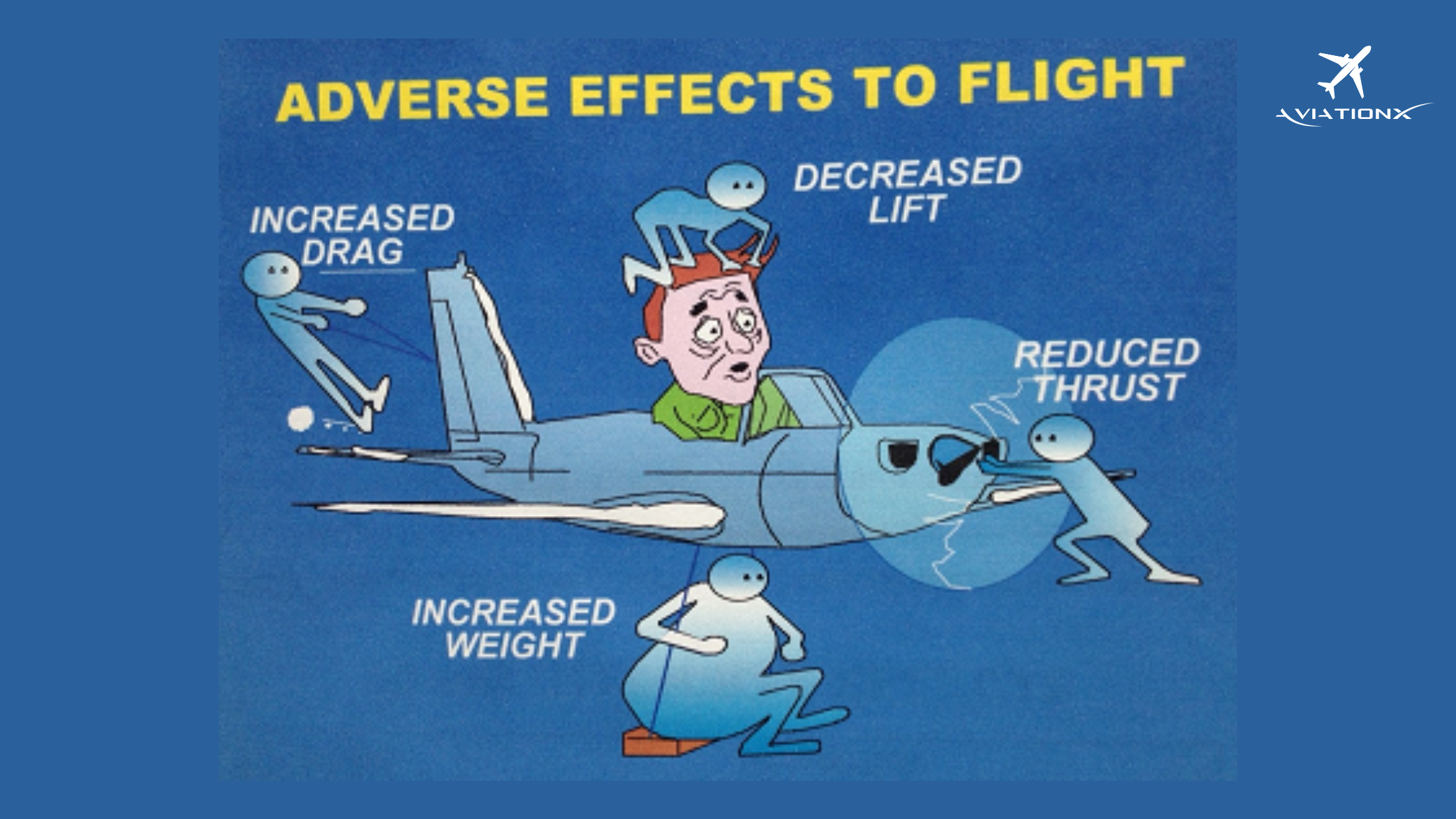
Ice accumulation significantly impairs the function of various aircraft components, including wings, control surfaces, propellers, windscreens, canopies, radio antennas, pilot tubes, static vents, carburetors, and air intakes. Turbine engines are particularly susceptible, with ice formation on the intake cowling leading to air intake constriction and potential flameouts caused by ice on rotor and starter blades.
Ice formation usually begins with the pencil-thin outside air temperature gauge, progressing to the wings as the last structural component. Thin coatings or frosting on the windshield, particularly during take-off and landing, can obscure vision, posing critical flight hazards.
Propeller icing manifests as a gradual power loss and engine roughness, starting from the spinner or propeller dome and spreading to the blades unevenly, causing imbalance and vibrations that stress the blades and engine mounts, potentially leading to failure.
Concurrent icing on wings, tail surfaces, and other projections exacerbates airflow disruption, altering airfoil cross-sections, reducing lift, increasing drag, and raising stalling speeds.
Icing on pilot tubes and static pressure ports can disrupt flight instruments, affecting altimeter, airspeed, and rate of climb indications, while gyroscopic instruments reliant on venturi may be affected by ice accumulation on the venturi throat.
Ice on radio antennas can impede VOR reception and communication with ground control, potentially resulting in whip antenna breakage due to ice weight.

What is Ice Accretion?
Formation of ice on an aircraft in flight is termed as ice accretion or icing. Icing seriously affects the aerodynamics of an aircraft, leading even to loss of control. It is a serious aviation hazard.
Although aircraft are fitted with de-icing devices, they provide only partial protection. For successfully combating icing, knowledge of the type of icing, conditions for formation, and techniques to avoid icing is essential.
Types of Icing
Ice accretion is of two types:
(a) Airframe icing
(b) Engine icing
Airframe Icing
Hoar Frost:
Hoar frost occurs on the airframe in clear air when the temperature of the airframe is below the frost point. It is a feathery deposit of ice crystals formed due to the sublimation of water vapor on the cold airframe.
Hoar frost forms on aircraft parked on the tarmac on a cold night. It may also form when an aircraft flying at high altitude rapidly descends to lower levels into warm and moist air.
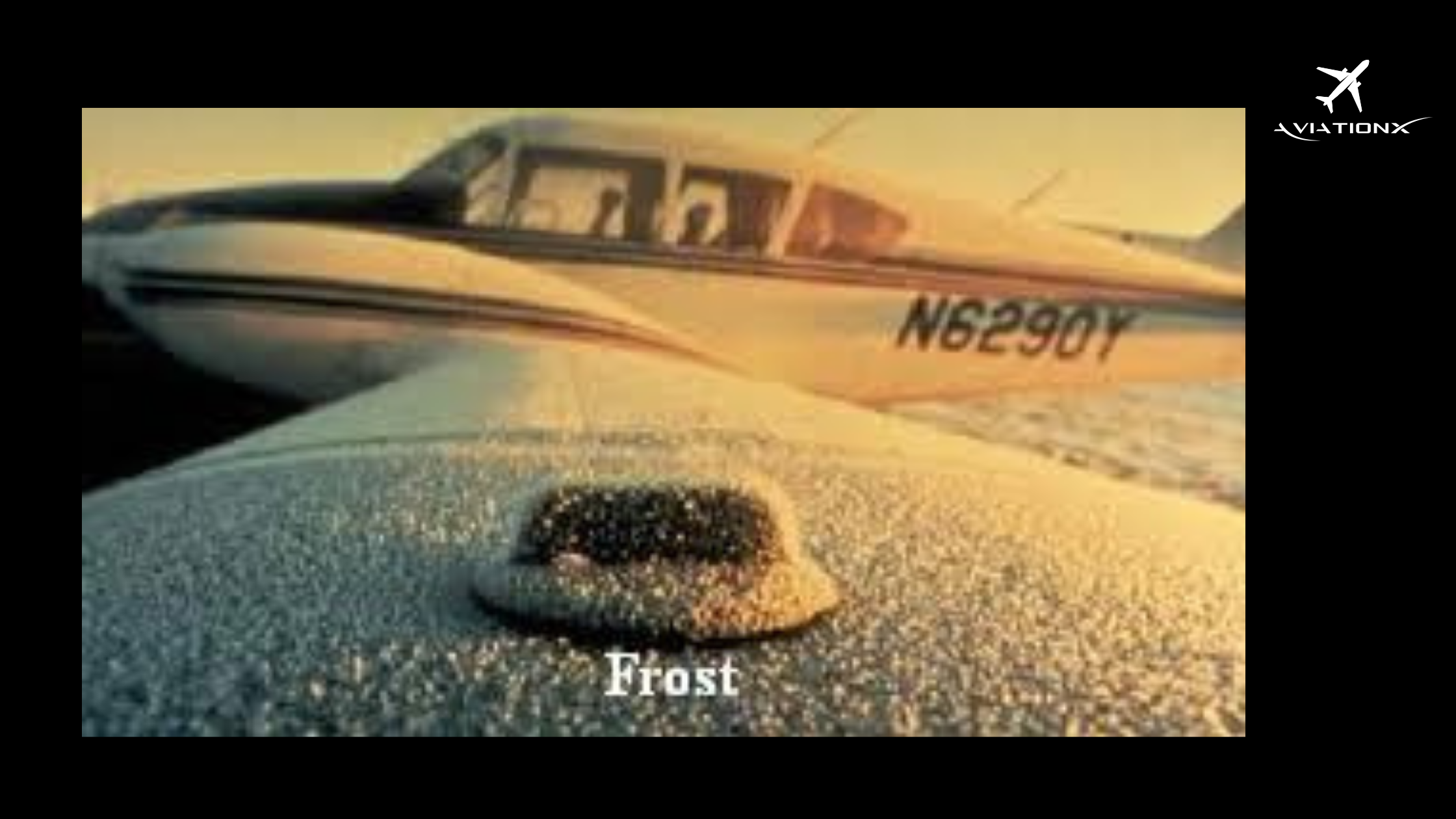
Opaque Rime:
This consists of a white opaque deposit of ice having a light porous texture. It is formed by freezing of small supercooled water droplets on the airframe when an aircraft is flying through clouds above the freezing level. It accumulates on the leading edges of wings, struts, etc.
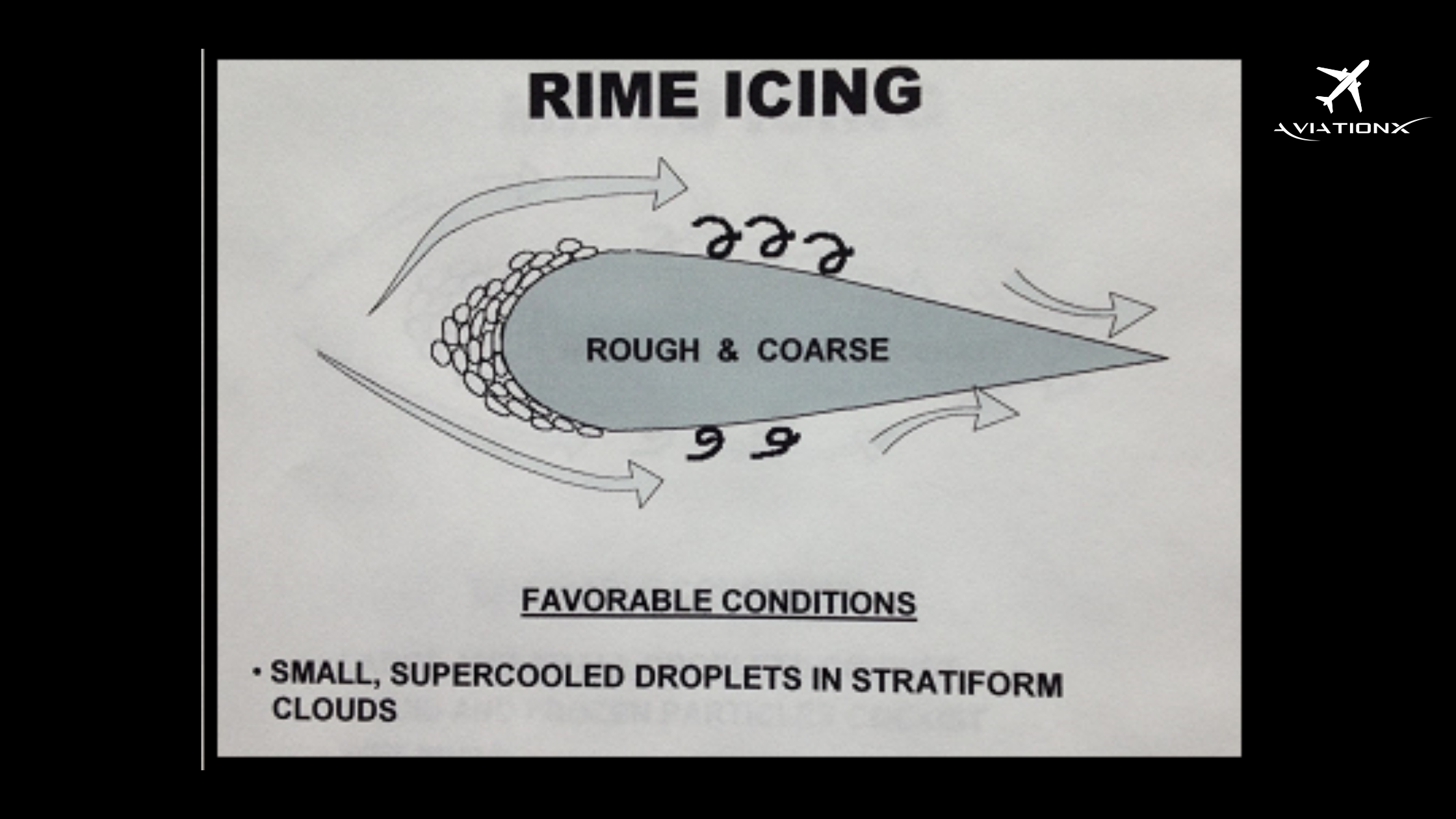
A large amount of air is entrapped between the particles exhibiting a white opaque appearance. Rime usually does not have much weight but may alter the aerodynamics of the wings.
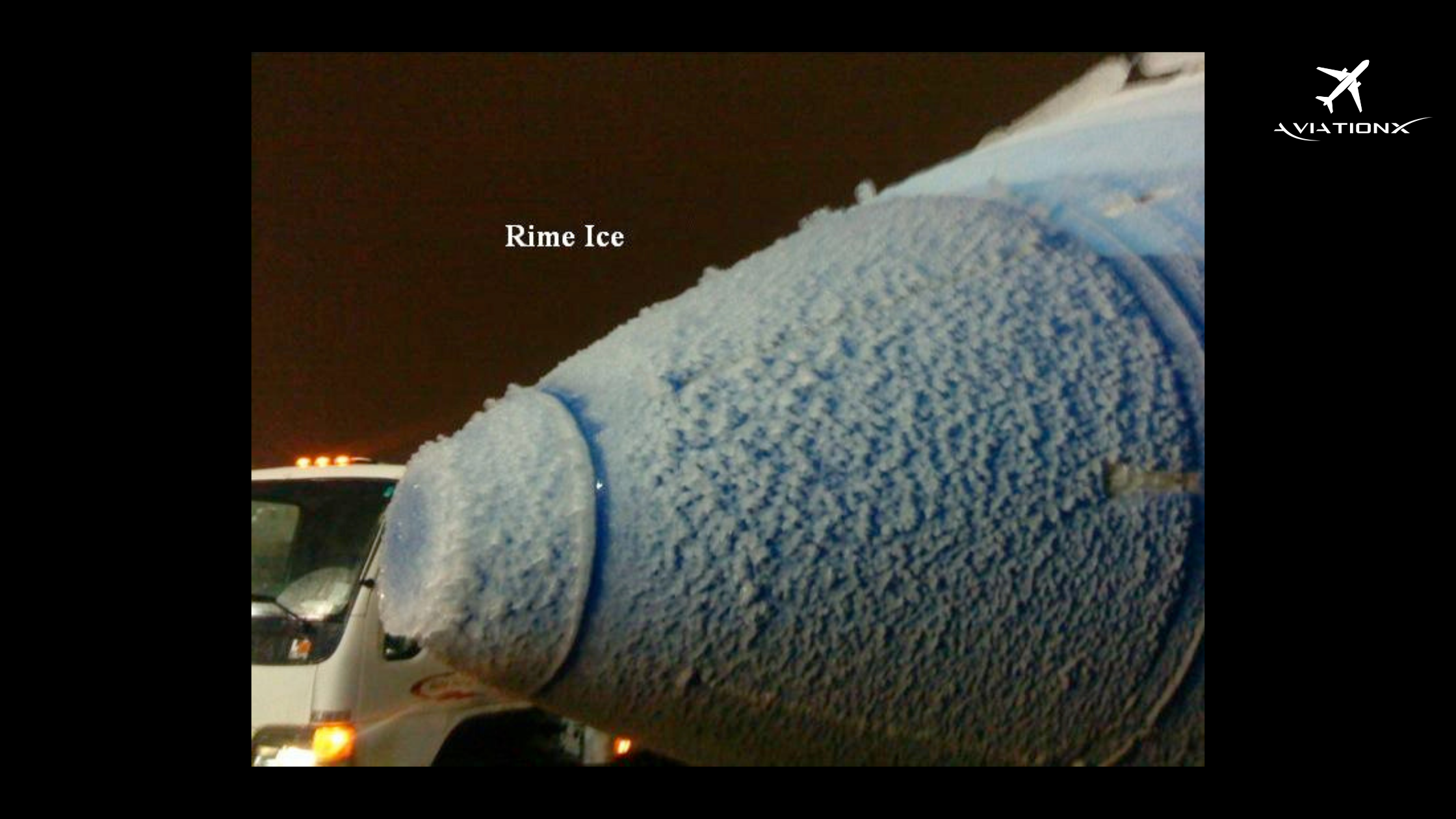
To access the entire blog, subscribe to our premium plans today and get one step closer to your Aviation Dreams Get AviationX Plus or AviationX Pro today for all things Aviation.
Limited time Super offer on AviationX Plus Membership (50% Forever discount)